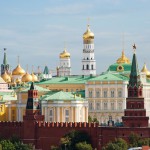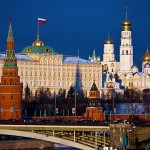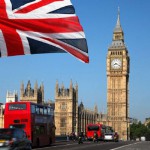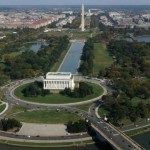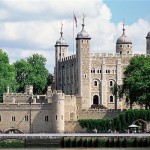The three underground storeys are devoted to the three centuries of Russia: the 18th century, the epoch of Peter and Katherine the Great; then the 19th century comes and at last our time with the atmosphere of the first pre-revolutionary years. It won’t be a camouflage, but real buildings, small houses, pubs, cafes and restaurants, stone pavements and city transport of those times.
Even its own archaeological museum will appear. The exhibits for the future museum have already been found here during the excavation works.
Doesn’t it look like “The Time Machine”? The complex will meet the first visitors during the celebration of the 850th anniversary of Moscow in 1997.
In a word, Moscow is a big construction site nowadays.
I have a special liking for the Kremlin and St.Basil’s Cathedral (Vasily Blazhenny). They are masterpieces of ancient Russian architecture. The main Kremlin tower, the Spasskaya Tower, has become the symbol of the country. On the territory of the Kremlin you can see old cathedrals, the Bell Tower of Ivan the Great, the Palace of Congresses, the Tzar-Cannon and the Tzar-Bell, the biggest cannon and bell in the world. St.Basil’s cathedral was built in the mid- 16th century in memory of the victory over Kazan. There is a legend that Ivan the Terrible blinded the architects Barma and Postnik, because he didn’t want them to create another masterpiece.
I am fond of art, and Moscow is the very place one can get acquainted with different kinds of arts. There are more than 80 museums in Moscow. The largest museums are the Pushkin Museum of Fine Arts and the State Tretyakov Gallery. Other unique museums in Moscow include the all-Russia Museum of Folk Arts, the Andrei Rublev Museum of Early Russian Art, Alexei Bakhrushin Theatre Museum, Mikhail Glinka Museum of Musical Culture and many others.
If you are a theatre-goer, you’ll find many theatres in Moscow. The most famous among them is the Bolshoi Opera House. Drama theatres and studios are also very popular.
Moscow is a city of students. There are over 80 higher educational institutions in it, including several universities.
Vocabulary
the epoch of Peter and Katherine the Great — эпоха Петра и Екатерины Великой
a camouflage — маскировка, камуфляж
a café — кафе
a restaurant — ресторан
an archaeological museum — археологический музей
excavation works — работы no выемке грунта
“The Time Machine” — Машина времени
St.Basil’s Chathedral — собор Василия Блаженного
the Bell Tower of Ivan the Great — колокольня Ивана Великого
the Palace of Congresses — Дворец Съездов
the Tzar-Cannon — Царь-пушка
the Tzar-Bell — Царь-колокол
Kazan — Казань
Barma and Postnik — Барма и Постник
the Pushkin Museum of Fine Arts — Музей изобразительных искусств имени Пушкина
the All-Russia Museum of Folk Arts — Всероссийский музей декоративного, прикладного и народного искусства
the Andrei Rublev Museum of Early Russian Art — Музей древнерусского искусства имени Андрея Рублева
Alexei Bakhrushin Theatre Museum — Театральный музей имени Бахрушина
Mikhail Glinka Museum of Musical Culture — Музей музыкальной культуры имени Глинки
The Bolshoi Opera House — Большой театр оперы и балета
drama theatre — драматический театр
studio — студия, театр-студия
higher educational institution — высшее учебное заведение
Советы учащимся:
- Не знаешь, как правильно произнести или перевести слово? http://www.lingvo-online.ru/ru- здесь ты сможешь послушать британское и американское произношение слов, а также найти их перевод.
- Не заучивай текст наизусть, попробуй пересказать его!
- Обязательно выучи все незнакомые слова с правильным произношением прежде, чем будешь пересказывать текст!
- Тяжело запомнить весь текст? Составь план текста.
